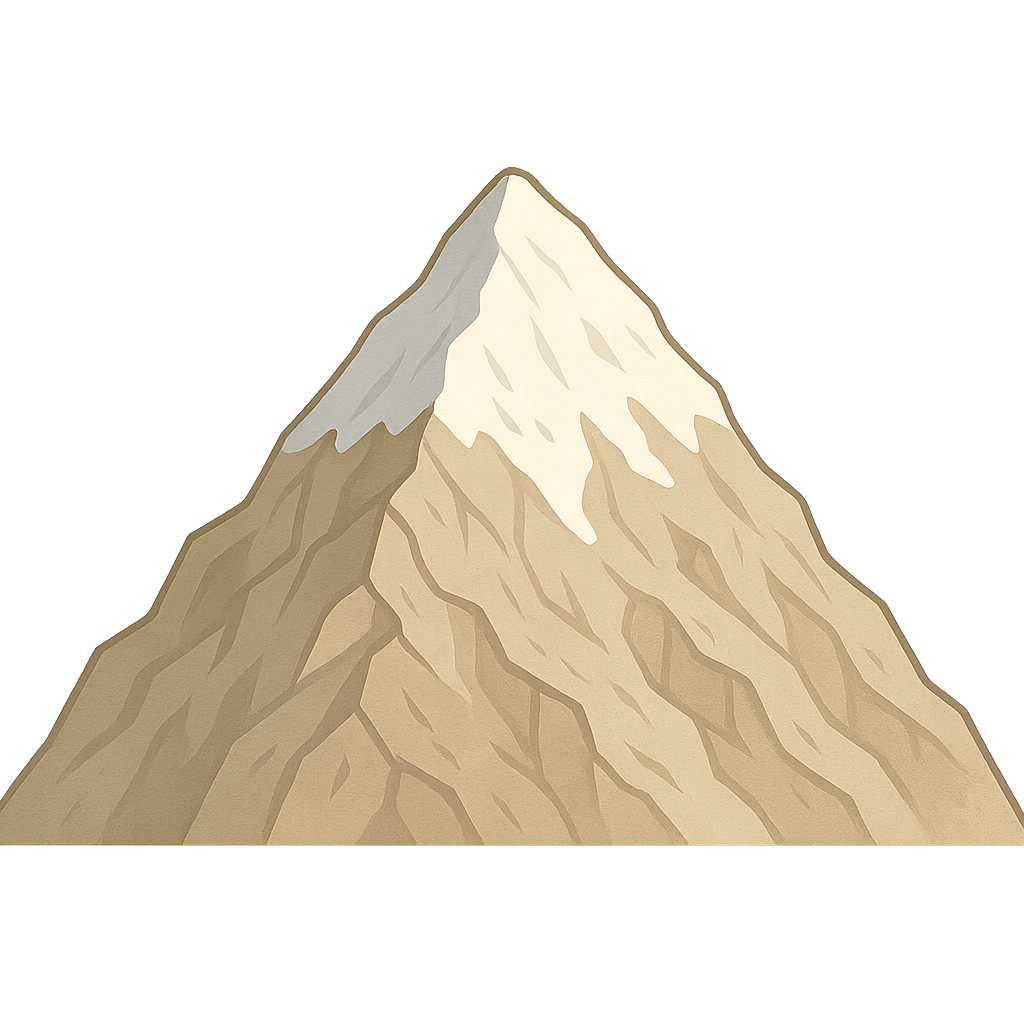The Mountain That Touches the Sky
From my shoulders, the world unfolds like a map. I am a rocky giant, a king of the mountains, crowned with ice and stone. The wind is my constant companion; it whispers ancient secrets as it whips around my peak. On clear days, I can see the gentle curve of the Earth, a blue and white marble spinning in the vastness of space. At night, the stars are so close they feel like diamonds I could almost touch. Far below, a blanket of clouds covers the world, and I stand alone in the silent, thin air where jets fly. For a long time, people knew me by different names. To the people of Tibet, I am Chomolungma, the Goddess Mother of the World. To the people of Nepal, I am Sagarmatha, the Forehead in the Sky. It was only in the 1800s that surveyors from far away gave me another name, one you might know best: Mount Everest. But no matter the name, my identity remains the same. I am the highest point on this planet, a silent witness to time itself.
My story began long before the first human looked up at me in wonder. It started over 60 million years ago, with a slow but unstoppable force deep within the Earth. Imagine two enormous pieces of the Earth’s crust, like giant continental puzzle pieces, called the Indian and Eurasian plates. For millions of years, the Indian plate drifted north, pushing relentlessly against the Eurasian plate. This colossal collision had nowhere to go but up. The land buckled, folded, and rose, creating the magnificent mountain range you call the Himalayas. I am the tallest of these siblings, and I am still growing, just a few millimeters each year, as the plates continue their ancient dance. For centuries, the valleys at my feet have been home to the Sherpa people. They are not just my neighbors; we share a deep connection. They see me not as a challenge to be conquered, but as the sacred Chomolungma. They possess an incredible strength and an intimate knowledge of my slopes, my weather, and my secrets. They understand that to climb my heights, one needs not just courage, but profound respect.
For many years, humans saw my peak as the ultimate puzzle, an impossible prize. Many brave explorers tried to solve the mystery of reaching my summit, but my harsh weather and thin air guarded my secrets well. Then, in the spring of 1953, a large British expedition arrived with a quiet determination. Among them were two men whose names would become forever linked with mine. One was Tenzing Norgay, a Sherpa man with a kind smile and a spirit as strong as my rock. He had grown up in my shadow and knew my moods better than anyone. The other was Edmund Hillary, a lanky beekeeper from New Zealand with a restless energy and an unyielding will. They were different in many ways, but they shared a powerful dream and a deep respect for each other. Their journey was grueling. They navigated the treacherous Khumbu Icefall, a shifting river of ice, and endured temperatures so cold they could freeze a person in minutes. As they climbed higher, the very air thinned, making every breath a struggle. Teamwork was everything; every member of the expedition played a part. Finally, on the morning of May 29, 1953, after weeks of effort, Tenzing and Hillary stood alone, facing the final, steep ridge to my summit. At 11:30 a.m., they took the last steps. They were the first people to ever stand on my highest point. From my perspective, I felt not a conquest, but a quiet, humble visit. Tenzing left an offering of chocolates in the snow, a gift to the goddess. Hillary took a photograph. They spent only fifteen minutes there, but in that moment, they showed the world what was possible.
That moment on May 29, 1953, sent a ripple of inspiration across the globe. Tenzing and Hillary’s achievement was not just a victory for them, but for all of humanity. It proved that with courage, preparation, and collaboration, even the most impossible-seeming goals could be reached. I became a beacon for dreamers. Inspired by their story, countless others have followed, each with their own reasons for making the difficult journey. In 1975, a determined woman from Japan named Junko Tabei became the first woman to stand where Tenzing and Hillary had stood, opening the door for many more. Today, I am more than just a mass of rock and ice. I am a symbol of perseverance, a testament to the human spirit’s desire to explore and to understand our world. I remind people that the greatest journeys are not just about reaching the top, but about the strength and wisdom gained along the way. So, I encourage you to look for the mountains in your own life. Your Everest may not be a physical peak, but a personal goal, a challenge to overcome, or a dream you long to achieve. Climb it with courage, climb it with respect, and climb it with all your heart.
Reading Comprehension Questions
Click to see answer
